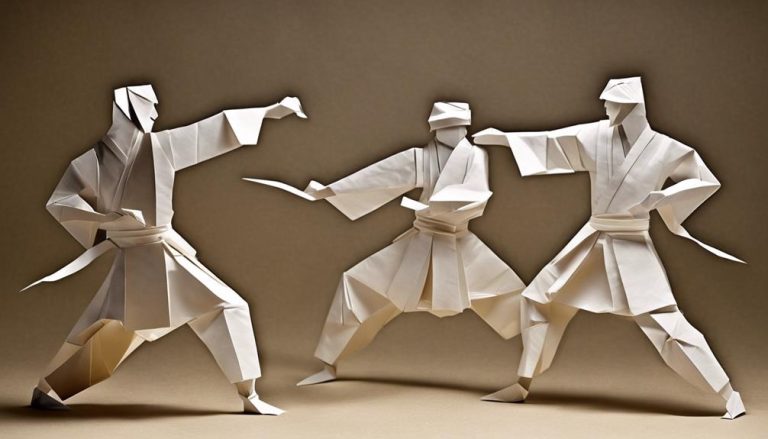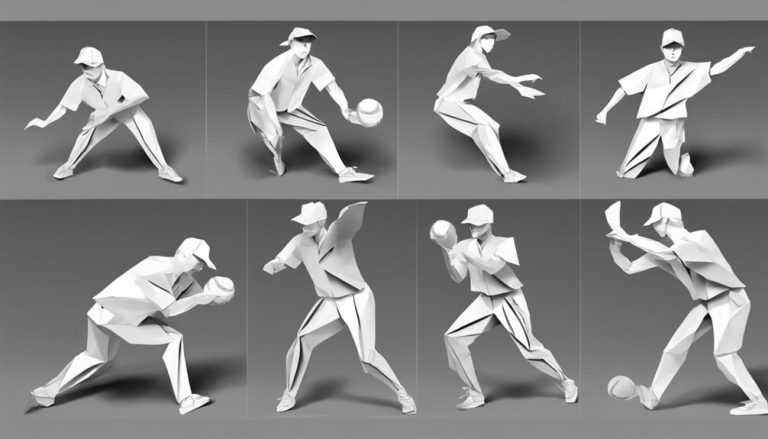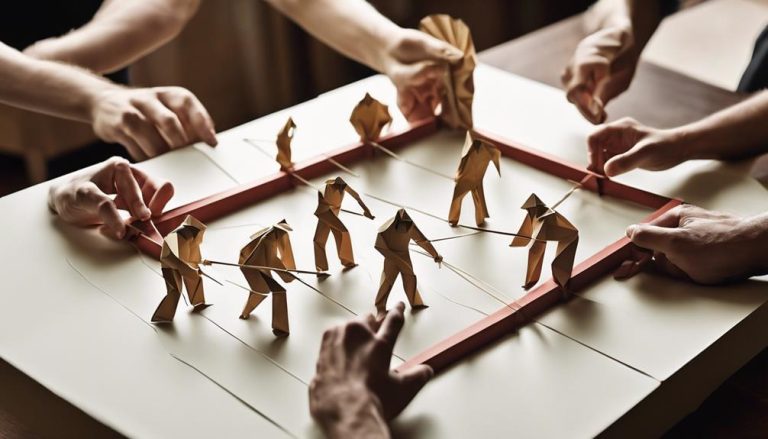General Rules of Trap Shooting
Imagine you step up to the shooting station, the sun warming your back as you prepare to take aim. As you raise your shotgun, your mind sharpens, focusing solely on the clay target launched into the sky. The rules of trap shooting are precise and crucial to ensure a fair and safe competition, but there is one aspect that can make or break your performance. Interested in discovering the key to mastering this essential element?
Safety Regulations
When participating in trap shooting, it is crucial to adhere to strict safety regulations to ensure the well-being of yourself and others on the range. Safety protocols are in place to protect everyone involved in this exhilarating sport. Always treat every firearm as if it's loaded, maintaining the muzzle pointed in a safe direction at all times. Before shooting, make sure your firearm is in good working condition. When on the range, only load your firearm when you are in your designated shooting station, and ensure the action is open when not actively shooting.
Familiarize yourself with the emergency procedures of the range. In case of an emergency, remain calm, unload your firearm, and follow the instructions of the range safety officer. It's essential to know where the first aid kit and emergency contact information are located. Being prepared for emergencies can make a significant difference in ensuring the safety of yourself and others during trap shooting activities.
Shooter Equipment Requirements
To participate safely in trap shooting, you must equip yourself with specific gear that meets the sport's requirements. Proper equipment maintenance is crucial for peak performance. Regularly clean and maintain your shotgun to ensure it functions smoothly and reliably during competitions. Shooter attire is also important; wear comfortable clothing that allows for a full range of motion. Additionally, consider investing in shooting glasses and ear protection to safeguard your eyes and ears from potential harm.
Shotgun customization can enhance your shooting experience. Adjusting the stock length and comb height to fit your body can improve accuracy and comfort. Experimenting with different chokes and loads can also help you find the best combination for consistent target breaks.
When it comes to shooting techniques, practice proper gun mount, sight alignment, and follow-through. Focus on maintaining a smooth swing and coordinating your movements with target speed and trajectory. Remember, consistent practice and attention to detail are key to success in trap shooting.
Field Layout and Shooting Stations
Let's talk about the essential elements of trap shooting field setup and the shooting stations. Understanding the station arrangement and shooting sequence is crucial for a successful trap shooting experience. Following these guidelines will help you navigate the field layout efficiently and make the most of your shooting sessions.
Station Arrangement
Proper station arrangement in trap shooting involves a strategic field layout and designated shooting stations for participants. Shooting positions are carefully set to provide varied angles for the targets to challenge shooters. The target trajectory and speed are adjusted based on the shooting station, ensuring a fair and engaging experience for all participants. Here are some key aspects of station arrangement:
- Varied Shooting Angles: Stations are positioned to offer shooters different angles of target presentation.
- Distance Consistency: Shooting stations are spaced equally to maintain a consistent target distance for all participants.
- Visibility Considerations: Stations are arranged to provide clear visibility of the target trajectory for each shooter.
These elements contribute to a well-designed trap shooting field, enhancing the overall competition experience.
Shooting Sequence
In trap shooting, the shooting sequence on the field layout and designated shooting stations plays a crucial role in determining the flow of the competition. Target placement and timing are key factors that influence the shooter's strategy. Understanding the shooter stance is essential for maintaining balance and control during the competition. Establishing a consistent rhythm can help improve accuracy and performance. Here's a table to illustrate the shooting sequence at different shooting stations:
| Shooting Station | Target Placement | Timing |
|---|---|---|
| Station 1 | Left | Delayed |
| Station 2 | Center | Random |
| Station 3 | Right | Instant |
Shooting Sequence and Rotation
When participating in trap shooting, understanding the shooting sequence and rotation is crucial for maintaining a smooth and fair competition. The shooting sequence refers to the order in which shooters take their turns, while rotation determines the movement from one shooting station to the next.
- Shooting Sequence:
- Shooters typically follow a set rotation determined by the range officials.
- Each shooter takes their turn to shoot at the target launched from the trap house.
- The shooting order may vary, with some competitions allowing shooters to choose their shooting stations.
Understanding the shooting sequence and rotation ensures that each participant has an equal opportunity to showcase their skills. By adhering to these rules, the competition remains organized and fair for all involved. Embrace the challenge of adapting to different shooting positions and sequences, as it adds an element of unpredictability and excitement to the sport.
Scoring System and Targets
Understanding how the scoring system functions and the types of targets used in trap shooting is essential for all participants aiming to excel in the sport. In trap shooting, the scoring system is based on hitting the clay targets launched into the air. Each target successfully hit earns a point, and typically, shooters compete in rounds aiming to achieve the highest score possible. The targets used in trap shooting are clay discs launched from machines known as traps. These targets can vary in speed, angle, and distance, providing a challenging yet thrilling experience for shooters. There are different types of targets used in trap shooting, such as singles, doubles, and handicap targets, each presenting unique challenges for participants. Understanding the characteristics of each target type is crucial for shooters to adapt their techniques and improve their performance. By mastering the scoring system and familiarizing yourself with the various target types, you can enhance your skills and increase your chances of success in trap shooting competitions.
Time Limits and Penalties
To adhere to competition regulations, participants must be mindful of time limits and penalties imposed in trap shooting events. Time management is crucial in ensuring the smooth flow of the competition and the fairness of the game. Here are some key points to consider:
- Practice Drills: Engaging in regular practice drills not only hones your shooting skills but also helps you improve your speed and efficiency during competitions. Practicing under time constraints can simulate the pressure of a real event, preparing you for timed rounds.
- Mental Preparation: Mental readiness is equally important when it comes to managing time limits. Stay focused, maintain a calm demeanor, and strategize your shots effectively to make the most out of the allocated time. Visualizing your movements and shots beforehand can help streamline your actions during the event.
- Adherence to Time Limits: Failure to comply with the specified time limits can result in penalties, affecting your overall score. It is essential to practice shooting within the allocated time frames to avoid any deductions or disqualifications. Stay disciplined and aware of the clock to maximize your performance while staying within the rules.
Prohibited Behaviors and Actions
Engaging in trap shooting competitions necessitates a strict adherence to prescribed guidelines to prevent any prohibited behaviors and actions that could impact the fairness and integrity of the game. Proper etiquette is paramount in trap shooting. This includes showing respect for fellow competitors, officials, and the sport itself. Respectful behavior must be maintained at all times, both on and off the shooting range. Any form of unsportsmanlike conduct, such as taunting opponents, using offensive language, or displaying aggressive gestures, is strictly prohibited.
Furthermore, any attempts to gain an unfair advantage, such as tampering with equipment, manipulating scores, or violating safety protocols, are considered serious violations. Engaging in such behaviors not only undermines the spirit of the competition but also jeopardizes the safety of everyone involved. It is essential for all participants to uphold the highest standards of sportsmanship and integrity to ensure a level playing field for all. Remember, trap shooting is not just a test of marksmanship skills but also a demonstration of character and respect for the sport.
Dispute Resolution Procedures
In case of disputes during trap shooting competitions, participants are required to adhere to established procedures for resolution. When conflicts arise, it is crucial to follow mediation processes and arbitration guidelines to reach a fair and impartial decision. Here are some key points to keep in mind:
- Mediation Process: Engaging in a mediation process allows both parties to discuss their concerns with the help of a neutral mediator. This can help in finding common ground and resolving disagreements amicably.
- Arbitration Guidelines: If the dispute cannot be resolved through mediation, participants may need to adhere to arbitration guidelines. This involves presenting their cases to an impartial arbitrator who will make an official ruling based on the information provided.
- Conflict Resolution: Understanding the importance of effective conflict resolution can enhance the overall experience of trap shooting competitions. Respecting the official rulings and accepting outcomes gracefully is essential for maintaining the integrity of the sport.
Competition Etiquette and Sportsmanship
Competition etiquette and sportsmanship are integral components of trap shooting that contribute to the overall integrity and camaraderie of the sport. Spectator behavior plays a crucial role in maintaining a respectful and supportive atmosphere during competitions. As a shooter, it's important to exhibit good sportsmanship by congratulating the winners and showing respect for your fellow competitors, regardless of the outcome. A simple handshake or a word of praise can go a long way in fostering a positive and encouraging environment for all participants.
When it comes to winner congratulations, remember that a genuine display of sportsmanship reflects positively on you as a shooter and on the sport as a whole. Whether you win or lose, acknowledging the skills and achievements of others is a sign of maturity and respect. By upholding these principles, you not only enhance the competitive spirit of trap shooting but also contribute to the growth and reputation of the sport.
Frequently Asked Questions
Can Shooters Use Electronic Devices, Such as Rangefinders or Shot Timers, During a Trap Shooting Competition?
Yes, shooters can't use electronic devices like rangefinders or shot timers during a trap shooting competition. This rule ensures fair play by preventing technology use for gaining a competitive advantage. Stick to equipment restrictions to maintain the essence of the sport.
Are There Any Specific Rules Regarding the Type of Ammunition That Can Be Used During a Trap Shooting Event?
When it comes to ammo types in trap shooting competitions, regulations often dictate what's allowed. Make sure to check the specific rules of the event you're participating in to ensure you're using the right ammunition.
How Are Tiebreakers Handled in Trap Shooting Competitions?
In trap shooting competitions, tiebreakers are resolved through shoot-off procedures. Participants with tied scores engage in additional rounds. The scoring system remains crucial as each shot determines the winner. This method ensures fairness and determines the ultimate champion.
Is There a Minimum Age Requirement for Participating in Trap Shooting Competitions?
To participate in trap shooting competitions, a minimum age requirement may exist. Some events may need parental consent for minors. It's crucial to follow safety guidelines to ensure a secure and enjoyable experience.
Are There Any Specific Rules Regarding the Attire or Dress Code for Shooters During a Trap Shooting Event?
When you participate in a trap shooting event, make sure to adhere to specific attire requirements. These may include dress code restrictions such as no open-toed shoes or sleeveless tops. Following these guidelines ensures a safe and professional environment.






